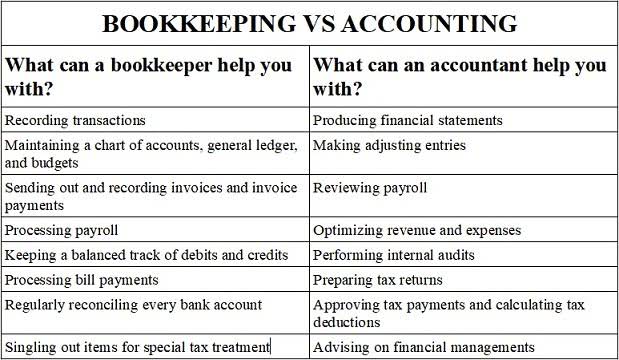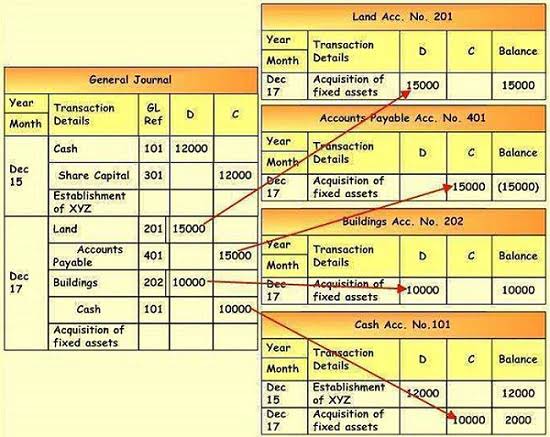Bookkeeping
What Is a Good Debt Ratio and What’s a Bad One?

At the same time, leverage is an important tool that companies use to grow, and many businesses find sustainable uses for debt. Financial data providers calculate it using only long-term and short-term debt (including current portions of long-term debt), excluding liabilities such as accounts payable, negative goodwill, and others. The concept of comparing total assets to total debt also relates to entities that may not be businesses. debt to asset ratio For example, the United States Department of Agriculture keeps a close eye on how the relationship between farmland assets, debt, and equity change over time. A ratio greater than 1 shows that a considerable amount of a company’s assets are funded by debt, which means the company has more liabilities than assets. A high ratio indicates that a company may be at risk of default on its loans if interest rates suddenly rise.

Other Financial Ratios to Consider
- With increasing profitability and a strong sales trend, the company is expected to continue its positive growth in the near future.
- One shortcoming of the total debt-to-total assets ratio is that it does not provide any indication of asset quality since it lumps all tangible and intangible assets together.
- So if a company has total assets of $100 million and total debt of $30 million, its debt ratio is 0.3 or 30%.
- The result is that Starbucks has an easy time borrowing money—creditors trust that it is in a solid financial position and can be expected to pay them back in full.
- Last, businesses in the same industry can be contrasted using their debt ratios.
- As a result, borrowing that seemed prudent at first can prove unprofitable later under different circumstances.
The debt to asset ratio creates a picture of the debt percentage that makes up an asset portfolio. Consider the inventory turnover ratio that measures how quickly a company converts inventory to a sale. A company can track https://www.bookstime.com/articles/government-and-nonprofit-accounting its inventory turnover over a full calendar year to see how quickly it converted goods to cash each month. Then, a company can explore the reasons certain months lagged or why certain months exceeded expectations.
Debt Ratio vs. Long-Term Debt to Asset Ratio

The curve demonstrates that at any point along the curve, a person receives the same level of satisfaction by utilizing a combination of cloth and beach balls. For example, consuming 6 units of beach balls and 8 units of cloth provides the same level of satisfaction as consuming 2 units of beach balls and 14 units of cloth. The slope of the indifference curve is known as the marginal rate of substitution (MRS). It describes the quantity of one commodity that an individual would substitute for another to maintain the same level of satisfaction.
What Is the Total Debt-to-Total Assets Ratio?
Capital-intensive businesses, such as manufacturing or utilities, can get away with slightly higher debt ratios when they are expanding operations. During times of high interest rates, good debt ratios tend to be lower than during low-rate periods. The fundamental accounting equation states that at all times, a company’s assets must equal the sum of its liabilities and equity.

Total Noncurrent Liabilities
For example, if the average P/E ratio of all companies in the S&P 500 index is 20, and the majority of companies have P/Es between 15 and 25, a stock with a P/E ratio of seven is probably undervalued. The former may trend upwards in the future, while the latter may trend downwards until each aligns with its intrinsic value. The Ascent is a Motley Fool service that rates and reviews essential products for your everyday money matters. If you do choose to calculate your debt-to-asset ratio, do so on a regular basis so you can track any increases or decreases in your number and act accordingly.

- This ratio shows the proportion of company assets that are financed by creditors through loans, mortgages, and other forms of debt.
- In order to perform industry analysis, you look at the debt-to-asset ratio for other firms in your industry.
- Finally, she plugs both of these figures into the debt to asset equation to find the raw decimal value of her company’s ratio.
- Interpreting the debt to assets ratio involves understanding the proportion of a company’s assets that are financed by debt.
- The company must also hire and train employees in an industry with exceptionally high employee turnover, adhere to food safety regulations for its more than 18,253 stores in 2022.
- Comparing a company’s debt ratio with industry benchmarks is crucial to assess its relative financial health.
He’s recently been worried about the finances of the organization as he prepares to apply for a loan extension. He decides to conduct a debt to asset ratio test to determine the percentage of his expenses accounted for by financing. Companies with lower debt ratios and higher equity ratios are known as “conservative” companies. Ratio analysis can help investors understand a company’s current performance and likely future growth. However, companies can make small changes that make their stock and company ratios more attractive without changing any underlying financial fundamentals. To counter this limitation, investors also need to understand the variables behind ratios, what information they do and do not communicate, and how they are susceptible to manipulation.

